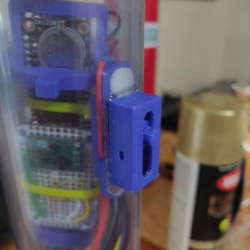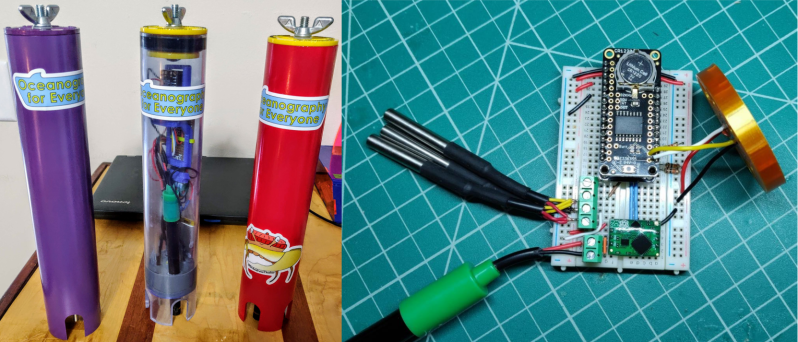With Earth in the throes of climate change and no suitable Planet B lined up just yet, oceanography is as important now as it has ever been. And yet, the instruments relied upon for decades to test ocean conditions are holding steady within the range of expensive to prohibitively expensive. Like any other area of science, lowering the barrier of entry has almost no disadvantages — more players means more data, and that means more insight into the inner workings of the briny deep.
 [Oceanography for Everyone] aims to change all that by showing the world just how easy it is to build an oceanographic testing suite that measures conductivity (aka salinity), temperature, and depth using common components. OpenCTD is designed primarily for use on the continental shelf, and has been successfully tested to a depth of 100 meters.
[Oceanography for Everyone] aims to change all that by showing the world just how easy it is to build an oceanographic testing suite that measures conductivity (aka salinity), temperature, and depth using common components. OpenCTD is designed primarily for use on the continental shelf, and has been successfully tested to a depth of 100 meters.
An Adalogger M0 and RTC Featherwing run the show from their waterproof booth in the center of the PVC tube. There’s a 14-bar pressure sensor for depth, a trio of DS18B20s for temperature averaging, and a commercial conductivity probe that gathers salinity data. These sensors are fed through a 3D-printed base plate and ultimately potted in stainless steel epoxy. The other end of the tube is sealed with a mechanical plug that seats and unseats with the whirl of a wingnut.
We particularly like the scratch-built magnetic slide switch that turns OpenCTD on and off without the need to open the cylinder. If you’d like to build one of these for yourself, take a deep dive into [Oceanography for Everyone]’s comprehensive guide — it covers the components, construction, and calibration in remarkable detail. The switch is explained starting on page 50. You can find out more about the work Oceanography for Everyone is doing at their site.
As far as cheap waterproof enclosures go, PVC is a great choice. It works well for underwater photography, too.

















This isn’t accurate at all. I worked for many oceanic sensor projects in my career and they are almost all projects like the one above. Fuck, I remember when 3d printing came about, we nearly shit ourselves with joy.
T-t-t-trigggered
If discussion of climate change is gonna get you upset you’re going to have a rough decade.
I saw an article about Chinese “fishermen” catching “submarine spies” which sounds an awful lot like one of these beasties.
I’d love to make one of these and chuck it in the sea but I imagine the data costs would be significant maybe one text per day at about £0.5 per text and run out of money like those Russian eagles.
Here’s another open source oceanography project: https://github.com/project-hermes
Open Source software and hardware, attached to divers.
How do they phone home?
One minor nit-pick – according to current IMO maritime regulations, anything plastic introduced into the ocean from an IMO registered vessel -must- be designed to retrieved from the water in short order by the vessel that put it there . So… It is fine and dandy to use PVC/Plexiglass on a ROV or on an AUV (Sea Glider, etc), but is not to be used in a ‘disposable’ sensor.
Operative “short order” so PVC should last long enough.
So what I hear you saying is, we need a potato cannon to launch these from shore :D
As far as I can see there’s no way to get the data out of it without physical retrieval, all of the data is logged to a microSD and stays there. They mention it being deployed as part of larger “rosette” systems which are used to grab and retrieve water samples so that they have the environmental metadata of exactly where that sample was taken, so it isn’t something you leave there.
Not very ‘open’. The sensor is very closed – they even removed the IC labels.
https://www.atlas-scientific.com/_images/gallery/circuits/61.jpg
Look at their OEM version of the sensor and the reason becomes clear, it’s primarily a PIC18 chip with some mystery chips that are labeled “H31” and “H33”.
It appears all of Atlas Scientific products follow the formulation of combining a raw sensor with a cheap MCU data processor.
I guess the challenge is what to do with all the data.
After all those with influence DO NOT care about the facts.
But it is fun to document water salinity or gravitational pull varying all over the planet. Day after day.